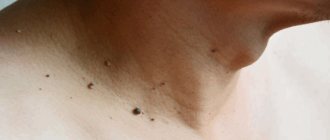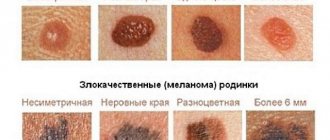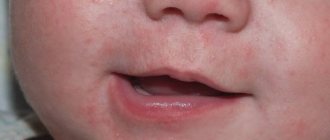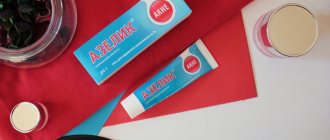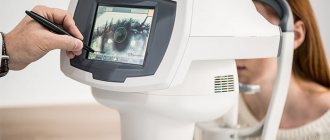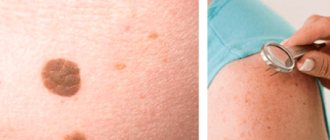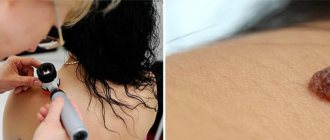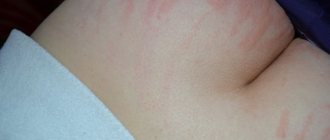Every year, perfectly smooth skin becomes increasingly rare. Small scars or moles are not taken into account. Although they are also capable of delivering considerable psychological discomfort to their owner. But the appearance of pink spots on the skin can also be the cause of an infectious disease, which is important not to miss.
If pink spots appear on the body, then most likely they are a warning about a malfunction in the body, indicating an allergy or infection . Most often, such rashes are regarded as the initial stage of the appearance of a rash. Even if small redness does not cause discomfort, does not flake or itch, it is better to consult a doctor and get the right treatment.
Types of spots on the skin
Experts distinguish three types of pink spots:
- Vascular. Their appearance is associated with the condition of the blood vessels. The color of the spots, which can take on pink, red or lilac shades, depends on the degree of their damage.
- Pigmented. They can be light pink or brownish-pink in color; the appearance of such spots is associated with the loss of melanin in the skin.
- Artificial. These spots occur as a result of an allergic reaction, which can develop after certain cosmetic procedures, the use of medications, vaccinations and body manipulation, such as tattooing, piercing, tattooing, etc.
Pigment
Pigment spots are characterized by too dark or too light a color, they appear against the background of unchanged skin. There are hyperpigmented and hypopigmented spots. The first of them are formed in places of excessive pigmentation; they have a dark color. Representatives of such spots are freckles, chloasma, lentigo, birthmarks, etc. The second of them is characterized by an insufficient amount of pigment. This condition can be congenital or acquired, associated with various diseases: lichen, vitiligo, psoriasis and others.
Vascular
There are several types of vascular spots:
- Hyperemic, or oversaturated with blood. Such spots can be inflammatory or non-inflammatory in nature. The first of them occur when vasodilation occurs due to the inflammatory process. The size of the spots can vary significantly. Non-inflammatory hyperemic spots are most often caused by severe emotional overload.
- Hemorrhagic. They develop with small intradermal hemorrhages that occur due to trauma and mechanical stress, as well as with some severe vascular diseases.
- Telangiectatic. They are also called spider veins. Spots of this type can appear as a result of poor diet, alcohol abuse, smoking, vascular pathologies, and also due to temperature exposure.
Artificial
Stains of artificial origin include various manifestations of an allergic reaction, including those that occur when various dyes are introduced into the skin, for example, when applying a tattoo.
Photo of pink spots on the skin
Pink spots on the skin
On the body they can be recognized by their color: light or dark pink, they always differ from the main color of the skin. If you run your hand over them, most likely they will be smooth, but in some cases there may be bulging, but very small, or roughness. And depending on the visual characteristics and reasons for their appearance, they can be divided into three subgroups:
- Vascular rashes on the skin. Their color depends on the condition of the blood vessels and is most often purple, red or pink.
- White or brown colors are pigmented and appear on the body due to excess or lack of melanin.
- When a dye is injected under the skin when applying a tattoo or permanent makeup, spots of artificial origin may appear.
Common Causes of Pink Spots
The main common reasons for the appearance of pink spots on the skin are the following:
- Allergy. Cosmetics and household chemicals, food, medications, etc. can act as allergens. Subsequently, blisters form at the site of the spots. An allergy rash is accompanied by severe itching.
- Poor nutrition. Abuse of fast food, fried foods, smoked meats, processed foods, sweets, and confectionery products can lead to dermatological problems.
- Drinking alcoholic beverages. Red and pink spots often appear on the skin after drinking alcohol. This is due to the expansion of blood vessels and the deterioration of their walls.
- Disturbances in the normal functioning of internal organs. Often, skin problems are only one of the manifestations of more serious disorders in the body. Many diseases can lead to the appearance of rashes and spots on the body, for example, vegetative-vascular dystonia, liver disease and others.
- Infections. The cause of spots on the skin can be infectious diseases: lichen, meningitis, scarlet fever, syphilis, chickenpox and others.
- Hormonal imbalances. Spots on the skin can appear during periods of hormonal changes in the body (during pregnancy, adolescence, menopause) or during endocrine pathologies.
- Stress and nervous overload. They can also cause blemishes on the skin. Most often, they are localized in the neck, face, chest and arms.
- Dermatological pathologies. These include: photodermatosis, seborrhea, psoriasis, eczema and others.
Pink rash on the body without itching
With certain pathologies, pink spots may appear on the body that do not itch. However, this does not mean that they can be ignored, hoping that the rash will disappear on its own. Some spots may protrude above the surface of the epidermis, that is, have the structure of a small compaction.
So, if pink spots on the skin do not itch, but rise above the skin in the form of a tubercle, then these could be nevi, or ordinary moles. As long as they do not cause any discomfort, they can be left alone, but if they suddenly darken, become inflamed and bleed, emergency measures must be taken. Such anomalies often indicate malignancy - the degeneration of a mole into a malignant skin tumor (melanoma).
Other reasons for the appearance of pink spots on the skin that do not itch may include:
- Severe stress. In this case, pathological rashes appear on their own and go away on their own, that is, there is no need to fight them. You just need to avoid nervous tension, and then the pink spot on the skin that doesn’t itch will quickly go away.
- A specific manifestation of an allergic reaction. As a rule, allergy rashes cause itching and burning, but it happens that there are no such symptoms. In any case, it never hurts to treat the areas of the body affected by the rash with a decoction of St. John's wort or chamomile.
- Pathologies of the cardiovascular system and gastrointestinal tract.
- Abuse of “heavy” foods - fried, spicy, high-calorie.
- Infectious diseases can cause pink spots to appear on the legs and arms. Especially if the pathology is treated through the use of antibacterial drugs. Although allergies to medications often cause itching.
- Pink spots on the neck may be the result of drinking low-quality alcohol. Abuse of alcoholic beverages can also cause a sharp reaction in the body. An allergy to alcohol goes away quickly, but to speed up this process, you should still take an antihistamine tablet.
- Dysfunction of the autonomic nervous system. Any, even the most minor, stressful situations can lead to disturbances in the functioning of the ANS. In this case, pink, rough spots appear on the body of an adult, since children rarely suffer from such an anomaly. Although, of course, this also happens.
- Malfunction of the immune system. If you have pink spots on your stomach, arms, legs, back, face, but there is no itching, you should make sure that your immune system is strong enough to withstand various irritants. In case of any deviations, it is recommended to immediately begin treatment with immunomodulatory drugs, while simultaneously eliminating the diseases caused by this disorder.
Determining causes by symptoms
Pink spot itches
The reasons for the appearance of pink spots, accompanied by itching and flaking, are very diverse. The most common of these include the following diseases:
- Eczema. This pathology develops due to hormonal imbalances, frequent stress, severe allergies or poor skin hygiene. The predisposition to the occurrence of this disease is hereditary. The location of the skin rash may vary. It is currently impossible to completely cure eczema; you can only temporarily relieve its symptoms.
- Lichen. Its main symptom is pink spots that are very itchy and flaky. The rash primarily affects the skin of the thighs, pelvis and back. When touching the inflamed areas of the skin, pain and discomfort are felt.
- Psoriasis. The disease is not contagious; it is believed that it appears under the influence of strong emotions, overwork, nervous shock and stress. The rash appears as pink spots, against which nodules may form. They are localized mainly on the abdomen, the outer part of the forearms and hands, and the back.
- Dermatitis of various etiologies: atopic, congestive, perioral, diaper, etc. The development of such diseases can be triggered by bad habits, severe stress, contact with allergens and other unfavorable factors.
- Diathesis. In children, itchy and flaky spots most often indicate diathesis. To get rid of them, you need to exclude from the baby’s diet the product that caused such a reaction.
- Allergy. This disease is manifested by the formation of a rash on the skin in the form of pink and red spots, against which vesicles then form. The rash is accompanied by severe itching.
Pink spots peel off without itching
With some diseases and problems in the body, pink flaky spots of various sizes may appear on the skin, which are not accompanied by itching. You also need to pay attention to such a rash, and it is better to visit a dermatologist to determine the nature of the rash and the need for its treatment.
Pink spots on the skin that do not itch can be regular moles or nevi. They often rise above the skin. If they do not cause discomfort or interfere, they should not be touched. In cases of sudden darkening of such a spot, its inflammation or bleeding, you should immediately seek medical help.
The causes of pink spots on the skin without itching can also be:
- stress. There is no need to take special measures to treat such a rash; it will disappear on its own after the person calms down;
- specific forms of allergies. Typically, allergic rashes are accompanied by severe burning and itching. However, in some cases no such symptoms are observed;
- pathologies of the digestive tract;
- errors in nutrition: overeating, eating large quantities of smoked, fatty and spicy foods;
- infectious diseases. Especially often, spots on the skin of the hands and feet appear during their treatment if antibacterial drugs are used;
- diseases of the cardiovascular system;
- weakened immunity;
- insufficient skin hygiene, etc.
Stains that do not cause any discomfort
Diseases that can cause spots on the skin without itching and peeling include: systemic lupus erythematosus and vegetative-vascular dystonia. The first of these is an autoimmune disease, the rash being only one of its manifestations. It can affect the bridge of the nose and cheeks.
Vegetative-vascular dystonia, or VSD for short, negatively affects the functioning of blood vessels and internal organs. With stress and emotional experiences against the background of VSD, bright pink spots may appear on the hands, face and chest. The reason for this is local dilation of small blood vessels in the skin, caused by disturbances in the normal tone of the nerves. As the person calms down, the spots disappear from the skin.
In addition to these diseases, pink rashes on the body, which do not cause inconvenience, can occur with an unbalanced diet, a lack or excess of certain vitamins, poor skin care, and various pathologies of internal organs.
The main types of spots on the skin and the causes of their appearance
All vascular manifestations on the body, photos of which are presented below, can be divided into three types: hyperemic, hemorrhagic, telangiectatic .
Saturated with blood or hyperemic most often refer to inflammatory spots, but may not have an inflammatory nature of origin. When inflamed, the blood vessels dilate and the rash can vary in size.
When a person experiences various emotional reactions, such as anger or shame, the blood vessels dilate and the skin turns pink. The place of their localization is most often the neck, face and chest.
As a result of external mechanical influence, hemorrhage occurs in the tissues of the dermis, which contributes to the appearance of hemorrhagic rashes . But such manifestations on the skin may also indicate the presence of a number of diseases that have a damaging effect on blood vessels.
If these were simple bruises resulting from a bruise or injury, then over time they change color from red to yellow and go away on their own. In other cases, medical attention and serious treatment may be required.
As a result of short-term or persistent dilation of blood vessels, telangiectatic rashes may appear on the skin. Due to the mass of various reasons, according to the nature of their occurrence, they can be acquired or congenital. Such spots on the body can appear as a warning about bad habits or an incorrect diet, or become a signal of dangerous diseases of the gastrointestinal tract or cardiovascular system.
Dark or white pigment spots on the skin appear due to changes in the amount of melanin . Such manifestations on the skin are, as can be seen in the photo below, hyperpigmented and occur with an increase in pigmentation in a certain area of the body. They are, in turn, divided into congenital, which everyone is accustomed to calling moles, and acquired ones - these are freckles.
Hypopigmented spots on the body appear due to a decrease in the amount of melanin. They can also be acquired or congenital. Acquired ones arise due to various diseases, such as lichen, eczema, psoriasis and others.
The presence of lichen spots on the body indicates the presence of a dangerous fungal disease that requires immediate treatment. Ringworm is one of the most common skin diseases and is of bacterial and viral origin .
When it appears, significant changes occur on the skin; itching and flaking of the skin may appear. The predisposing cause for the appearance of lichen is a general decrease in immunity. Lichen has different types, therefore, the spots of one or another type of lichen will differ, as shown in the photo below.
The following types of lichen are distinguished:
- Zhiber's lichen, or pink, is characterized by the appearance of red or pink areas on the skin that itch and flake, and the causative agent is the herpes virus types 6 and 7.
- Lichen planus covers the skin with purple spots, which can be localized not only on the body, but also affect the mucous membranes.
- Herpes zoster appears on the skin as red, inflamed spots that are covered with blisters.
- Pityriasis versicolor or pityriasis versicolor are flaky patches of pale skin.
- Ringworm appears on the body as severely itchy, flaky patches with hair loss in the affected area.
Almost all people have experienced the appearance of red spots on the skin. But such spots indicate various reasons, from the most common ones like allergies to dangerous diseases of viral origin. As a rule, the cause of red spots on the skin can be:
- Allergies to food, sunlight or household chemicals.
- Dermatitis and other skin diseases.
- Seasonal decreased immunity or vitamin deficiency.
- Infectious diseases such as scarlet fever, measles, chickenpox.
- Various sexually transmitted diseases.
- Stress and overwork.
If the appearance of spots on the skin is accompanied by fever, swelling, peeling, itching and other equally unpleasant symptoms, you should immediately see a doctor to receive timely treatment.
Light spots on the skin , as seen in the photo below, are lighter in color than the main color of the skin. Most often, they appear for a short time and are the final stage of healing of small abrasions, cuts, and skin infections. Sometimes they indicate problems in the body and have serious causes of their origin: infectious and chronic diseases, sun or chemical burns, stress.
Chronic autoimmune inflammation of the skin, called lupus erythematosus, is characterized by the appearance of round, pink, sharply defined spots. They have a thickened surface, peel off, do not go away without a trace, but leave a scar. Localized on the face, ears, scalp, which leads to hair loss. What makes lupus erythematosus different from other diseases is its origin: some malfunctions in the functioning of the immune system lead to the fact that the body begins to perceive its own cells as foreign and strives to destroy them.
Determining causes by appearance
White-pink spot on the skin
The cause of white-pink spots can be fungal infections of the skin. In this case, the rashes do not itch or hurt. Vitiligo manifests itself in a similar way; with this disease, spots can grow and become huge, for example, covering the entire forearm. Other causes of such rashes are: psoriasis, allergic reactions, infectious skin lesions.
Rose red
Red-pink spots may indicate such disorders and diseases as: allergies, dermatitis, infectious pathologies (rubella, measles, herpes and others), diseases of the genital area, disorders of the digestive system, lack of vitamins, weakened immunity and others.
If the appearance of a pink-red rash occurs with severe itching and burning in the skin, sore throat, and fever, then you should definitely consult a dermatologist.
Round pink spots
Clear round spots of various colors can be moles or nevi. They can be located on open areas of the skin or hidden under the hair. Such spots should not cause concern. Round, light pink rashes can occur with vitiligo. This disease is not dangerous to humans, but if you suspect it, you should visit a doctor to confirm the diagnosis. Pink spots can also be a symptom of dermatological diseases, such as lichen.
Rough or convex
Pink spots, convex or rough, can form on the skin due to various pathologies, mainly infectious, fungal or allergic in nature. Such diseases include: contact dermatitis, athlete's foot, microsporia, ringworm and other types, eczema, psoriasis and other pathologies. The location of such spots exclusively in the area of the scalp and face is characteristic of seborrheic dermatitis.
Skin pathologies accompanied by pink spots and itching all over the body
Probably every person has noticed pinkish dots or large spots that itch and peel. No one is immune from dermatological diseases, especially young children. However, they also occur quite often in adults.
So, a pink spot on the skin that itches and flakes can be caused by the pathologies described in the list below.
- Eczema. Eczema is a dermatological disease that occurs against the background of severe hormonal imbalances, neglect of hygiene rules, constant stress and severe allergic reactions. In addition, the pathology can be inherited. In this case, pathological rashes can be localized anywhere - on the arms, elbows, back, stomach. It is possible that pink spots may appear on the face. Eczema, unlike psoriasis, cannot be completely cured. You can only temporarily stop the symptoms of its manifestation.
- Lichen. If you have pink, scaly spots on your body that itch and cause a lot of discomfort, you are most likely infected with pityriasis rosea. The rashes are usually localized on the back, thighs and skin of the pelvis. If you touch the inflammation, you can feel pain. In the absence of timely treatment, the disease can progress to the chronic stage.
- Psoriasis. The disease is mainly emotional in nature. It is not contagious, so there is no need to worry about contact with a person who has pink, scaly patches on the skin. Develops against the background of stress, overwork, strong emotional outburst or nervous shock. The spots can become denser, forming nodules that rise above the surface of the epidermis. Psoriatic pink spots can be located on the back, abdomen, the outside of the elbows, hands, etc. Treatment of psoriasis must begin with psychotherapy, while simultaneously using pharmaceutical drugs to get rid of the unsightly rash.
- Dermatitis. If you have a pink spot on your skin that itches, then quite often such an anomaly may indicate the development of atopic or contact dermatitis. It all depends on the factors that caused the rash. Thus, with atopic dermatitis, pink spots on the skin appear due to stress, unfavorable heredity, bad habits, etc. With contact dermatitis, the cause lies in close contact with the allergen. In this case, the rash does not appear on those parts of the body that came into contact with the allergen.
- Allergy. Banal allergic reactions can cause pink spots on the body that itch and flake. They may be covered in small pimples or vesicles and go away after taking an antihistamine.
- Diathesis. If pink, scaly spots appear on the baby's face, this may indicate the development of diathesis. In this case, try to remember what your baby has eaten recently. Only eliminating the allergen from the diet will help you quickly get rid of the problem without consequences for the child’s health.
Treatment of manifestations
Treatment of the rash should begin by consulting a doctor and identifying the causes that caused it. This requires an examination, including blood and urine tests, examination, skin scraping, ultrasound of internal organs and consultations with specialists.
After making a diagnosis, the doctor prescribes a course of treatment. It may include: the use of local ointments and creams, antihistamines, sedatives, taking vitamins, cosmetic procedures, etc.
Antiallergic ointments and creams
Of the antiallergic ointments and creams, the most famous are the following:
- Protopic. It helps cope with most allergic rashes.
- Skin Cap. It contains zinc. The ointment is used to treat the skin according to individual indications.
- Zinc ointment is the most accessible remedy for allergic rashes accompanied by itching.
- Fenistil. It is used to eliminate any skin manifestations of allergies, as well as insect bites.
Antihistamines
Antihistamines used for skin rashes include:
- Zyrtec. Available in the form of drops, it rarely causes side effects.
- Telfast. Release form: tablets, which are recommended to be taken once a day for allergic skin pathologies.
- Fexofenadine. These tablets are suitable for treating various types of allergic rashes.
- Allegra. Medicine of the latest generation.
Possible complications
In most cases, skin problems accompanied by a rash are cured without visible consequences or harm to health. Of particular danger are pathologies of internal organs that occur with the formation of pink spots on the skin. Possible complications of such diseases include:
- heart failure;
- heart attack;
- liver dysfunction;
- metabolic disorder;
- stroke;
- disruptions in the functioning of the nervous system;
- renal failure and so on.
Prevention
The basis for preventing the appearance of pink spots of non-infectious origin is a proper balanced diet. In your diet you need to reduce the share of foods such as chocolate, honey, sweets, eggs, citrus fruits, soda and fast food. It is important to maintain caloric intake and the ratio of proteins, fats and carbohydrates. You should definitely pay attention to adequate intake of vitamins, especially during the cold season.
It is advisable to avoid stressful situations and nervous overload. You can learn calming techniques, walk more and relax. Set aside enough time for proper sleep. If you are prone to stains, you should give up strong tea and coffee, replacing them with herbal teas and fruit drinks.
